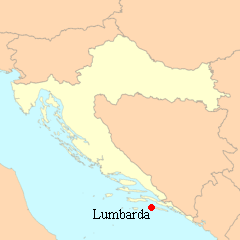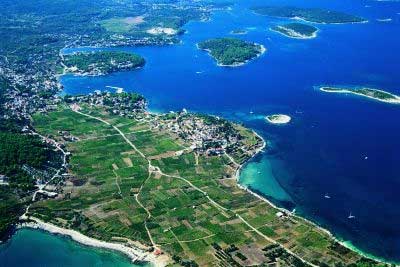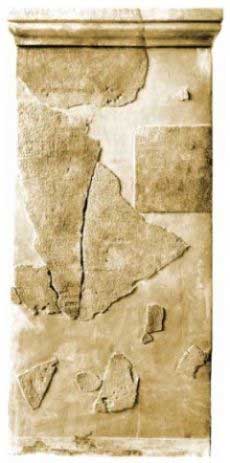.

Lumbarda on the map of Croatia
Lumbarda is a small fishermen's village located on the Eastern Cape of the Island of Korčula, 7 kilometers away from the town of Korčula. A road passing through a picturesque area of pine woods and olive groves connects these two places. Lumbarda is surrounded by sandy vineyards (famous white wine "Grk" produced from the native grape of the same name) and sandy beaches such as Vela Pržina, Bilin Žal and Tatinja. Lumbarda is a tourist centre, many of its 1200 inhabitants are active in the local tourist service (private accommodation, tourist excursion to islands Mljet and Lastovo and around islands of Korčula archipelago, scuba diving exursions etc.) but they are also wine-growers, fishermen and stone-dressers. Lumbarda has a rich history preserved in written documents dating back to more than two thousand years ago.

Lumbarda
Throughout its history, Lumbarda was a region combining various nations and cultures. Based on current research, the first inhabitants were the Illyrii, ruling the island during the Brozne and Iron Ages. Their artifacts can be found in the graves and strategic stone stacks, concentrated primarily on the western areas of Lumbarda.


Lumbardian decree-PSEFIZMA
With the intrusion of Greek interests on the Adriatic, the island relinquished its historical obliviousness becoming known as Korkyra Melaina (black). The region was of great importance to the Greeks, establishing two settlements on the Black Korkiri. The later settlement was founded in the 3rd century in Lumbarda. The most renown and significant Antic stone inscriptions found in the Republic of Croatia give witness to this historical event. The Lumbardian PSEFIZMA is kept in the Archaeological Museum in Zagreb. The decree details the particular details surrounding the establishment of the colony. The text, amongst other things, provides information on the Greeks from the island of Issa (today Vis) establishing the settlement on the basis of a prior agreement with the representatives of the local Illyrii, Pil and hisson Daz. The Lumbardian PSEFIZMA was discovered on the top of the hill Koludrt, where the Issian town most likely once stood. Somewhat south, in the Sutivan area, is located the necropolis colony from which originate Greek vases, now kept in the Korčula Town Museum.
The Greek colony designated the beginning of the end of the Illyrian era on Korčula, but their real downfall occurred during the invasion by the Roman Emperor Octavian in 35 B.C. Very soon following this dramatic event, the first Roman families arrived on the island. One of these families owned a spacious villa dating back to the first century, and located in Knežina region in the Lumbardian Veli area. Other than the building’s total area, it is particularly significant due to the way it was built – made of small pyramidal blocks placed in a slanted net. The technique is opus reticulatum, typical for the Roman regions in Italy, hence the Lumbardian villa is a unique case on the eastern Adriatic coast. The significant Roman remains are also to be found in the Koludrt and Sutivan regions. In the later, a thermal facility belonging to a smaller settlement with a respective necropolis was discovered. Furthermore, in the Lumdardian aquarium there is evidence of a Roman quarry on the islands of Sutvara, Vrnik and Kamenjak. The latter Antic age was preserved in the region mainly through remains relating to the early Christian age. Of all the remains, the best preserved is the chapel of St. Barbara on the island of Sutvara, dating to the 6th century.
| Ancient Greece
Science, Technology , Medicine , Warfare, , Biographies , Life , Cities/Places/Maps , Arts , Literature , Philosophy ,Olympics, Mythology , History , Images Medieval Greece / Byzantine Empire Science, Technology, Arts, , Warfare , Literature, Biographies, Icons, History Modern Greece Cities, Islands, Regions, Fauna/Flora ,Biographies , History , Warfare, Science/Technology, Literature, Music , Arts , Film/Actors , Sport , Fashion --- |
Retrieved from "http://en.wikipedia.org/"
All text is available under the terms of the GNU Free Documentation License


